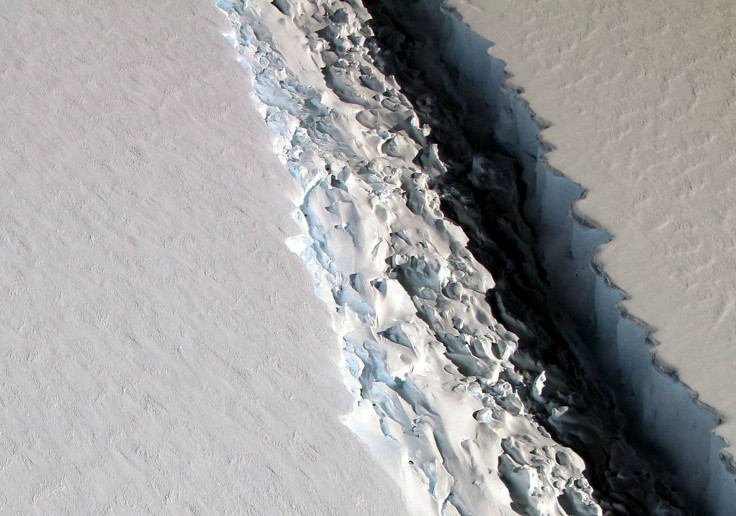What Now? Scientists Nervously Watch Massive Antarctic Iceberg Break From Larsen C Ice Shelf

Climate researchers all over the world nervously watched and waited for the crack in the Larsen C Ice Shelf to reach the edge and form one of the largest icebergs in recorded history. The crack completed last week and now that the berg is out in open water, the question everyone is looking for an answer to is “what now?”
Due to the fact that an iceberg of this size is rare, it’s difficult to know how it will travel and what its calving means for the berg, the shelf it broke off of and the ocean. But so far, the iceberg, called A-68, is behaving pretty normally, reported BBC.
Read: Massive Iceberg Breaks Off Antarctica: Delaware-Sized Berg Breaks Off Of Larsen C
Breaking news! The iceberg has fully detached from Larsen C - more details to follow soon pic.twitter.com/pdSxDuAGjR
— Project MIDAS (@MIDASOnIce) July 12, 2017
The iceberg, which is 2,200 square miles and 1,100 feet thick, broke off sometime between Monday and Wednesday of last week. The break was first detected by the NASA satellite Aqua MODIS, according to a release from Project Midas, which had been following the berg’s path and the break for months. All icebergs are made of freshwater and have broken off of an ice shelf or glacier at some point.
The berg reduced the size of the shelf by more than 12 percent. Researchers suspect that the remaining part of the shelf, as well was what will rebuild where the ice cracked off, will likely be more unstable moving forward.
So far the berg seems to be traveling the expected path, reported BBC. The space between A-68 and Larsen C is widening and researchers expect that the berg will stay close to the continent while traveling northeast toward the south Sandwich Islands, reported BBC. This is based on research that shows the past paths of other icebergs, and a model that helps researchers plot the paths of current bergs, the guess is that A-68 will continue its northeasterly course.
Read: 6 Massive Things Smaller Than The Iceberg That Just Broke Off Antarctica
The research, published in the Journal of Geophysical Research in April, includes a simulation of berg movement based on data from 7,000 other bergs. Those icebergs were all products of the Antarctic region and were of various shapes and sizes. The A-68 berg offers a unique set of information because it is abnormally large. If it ends up following the path the simulation predicts for it, the accuracy of the simulation would increase.
The more accurate the model is the better scientists will be able to predict the future of climate change as it connects to Antarctic iceberg creation and melt. While the situation isn’t ideal, it’s perhaps one of the best ways for researchers to test the accuracy of the current models they use to track icebergs. Large icebergs usually take 10 or more years to fully melt down and end up reduced, according to the study, so only time will tell whether A-68 will be typical or not.
© Copyright IBTimes 2024. All rights reserved.





















